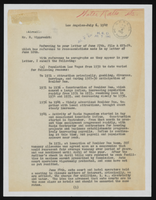Search the Special Collections and Archives Portal
Search Results

Transcript of interview with Hugh E. Key by Bob Bush, February 21, 1980
Date
Archival Collection
Description
On February 21, 1980, collector Bob Bush interviewed porter and retired military man, Hugh E. Key (born on November 17th, 1919 in Fordyce, Arkansas) in Las Vegas, Nevada. This interview covers the life of a Las Vegas old-timer. Hugh Keys’ wife, Mrs. Key, is also present during the interview and offers a few remarks.
Text

Transcript of interview with Eldon Cooper by Kamal Whilelm, March 3, 1975
Date
Archival Collection
Description
On March 3, 1975, Kamal Wilhelm interviewed Eldon G. Cooper (born 1922 in Overton, Nevada) about his experiences in Southern Nevada. Also present are Cooper’s wife and several unnamed adults in the background. Cooper first talks about his background and his eventual move to Las Vegas before describing the recreational activities in which he and his family took part. He later describes the atomic testing, environmental changes, modes of transportation, social changes, and tourism in Las Vegas. Cooper also discusses the Stewart Ranch, and his wife describes the setting of multiple photographs taken of properties in the Downtown Las Vegas area.
Text

Transcript of interview with Louis Fisher by Samuel Barto, March 20, 1978
Date
Archival Collection
Description
On March 20, 1978, collector Samuel Barto interviewed paint and drywall contractor, Louis Fisher (born July 10, 1922, in Alva, Oklahoma) in North Las Vegas, Nevada. The interview took place at the collector’s home with the collector, Mr. Barto and Mr. and Mrs. Fisher present. Mr. Fisher relocated to Las Vegas in 1953 after having lived in Alva, Oklahoma, Portland, Oregon, and Walla Walla, Washington. During the interview, Mr. Fisher discusses the history of Las Vegas from 1953 and offers key insight into the rapid growth of Las Vegas with special focus on the Strip, banks, the steady influx of people moving to Las Vegas for the warm climate, and housing.
Text

Transcript of interview with William Brymer by Rob Mullaney, March 9, 1979
Date
Description
Text

Photograph of the gaming floor of the El Morocco Club, 1961
Date
Archival Collection
Description
Gaming floor of El Morocco Club. Annotation: "1961 El Morocco Table Games, 21 dealers are Elmer Cotton and Elijah Green as casino manager Q. B. Bush (white shirt, dark jacket) looks on, Morocco ad 29 x 23 1/2".
Image
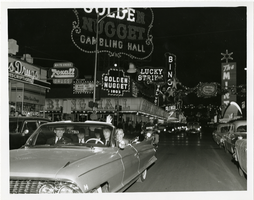
Photograph of Las Vegas Mayor Oran K. Gragson in a parade on Fremont Street, Las Vegas, Nevada, circa 1960s
Date
Archival Collection
Description
Image
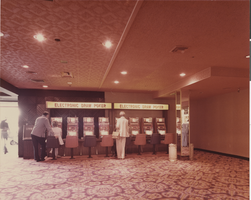
Photograph of electric draw poker machines in the Stardust Resort and Casino (Las Vegas), circa early 1970s
Date
Archival Collection
Description
Transcribed from photo sleeve: "Electronic draw poker machines in the Stardust Hotel. Taken before the hotel was renovated in the mid 1970s."
Site Name: Stardust Resort and Casino
Address: 3000 Las Vegas Boulevard South
Image
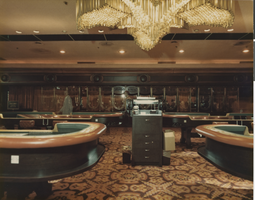
Photograph of the craps area in the Stardust Resort and Casino (Las Vegas), circa early 1970s
Date
Archival Collection
Description
Craps area in the Stardust before renovations. Transcribed from photo sleeve: "Casino area in the Stardust Hotel. Taken prior to the hotel renovation in the mid 1970s."
Site Name: Stardust Resort and Casino
Address: 3000 Las Vegas Boulevard South
Image
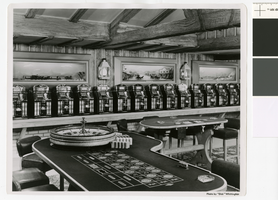
Photograph of the casino area of the El Rancho Vegas (Las Vegas), circa 1953
Date
Archival Collection
Description
Table games and slots in the El Rancho Vegas casino
Site Name: El Rancho Vegas
Address: 2500 Las Vegas Boulevard South
Image

